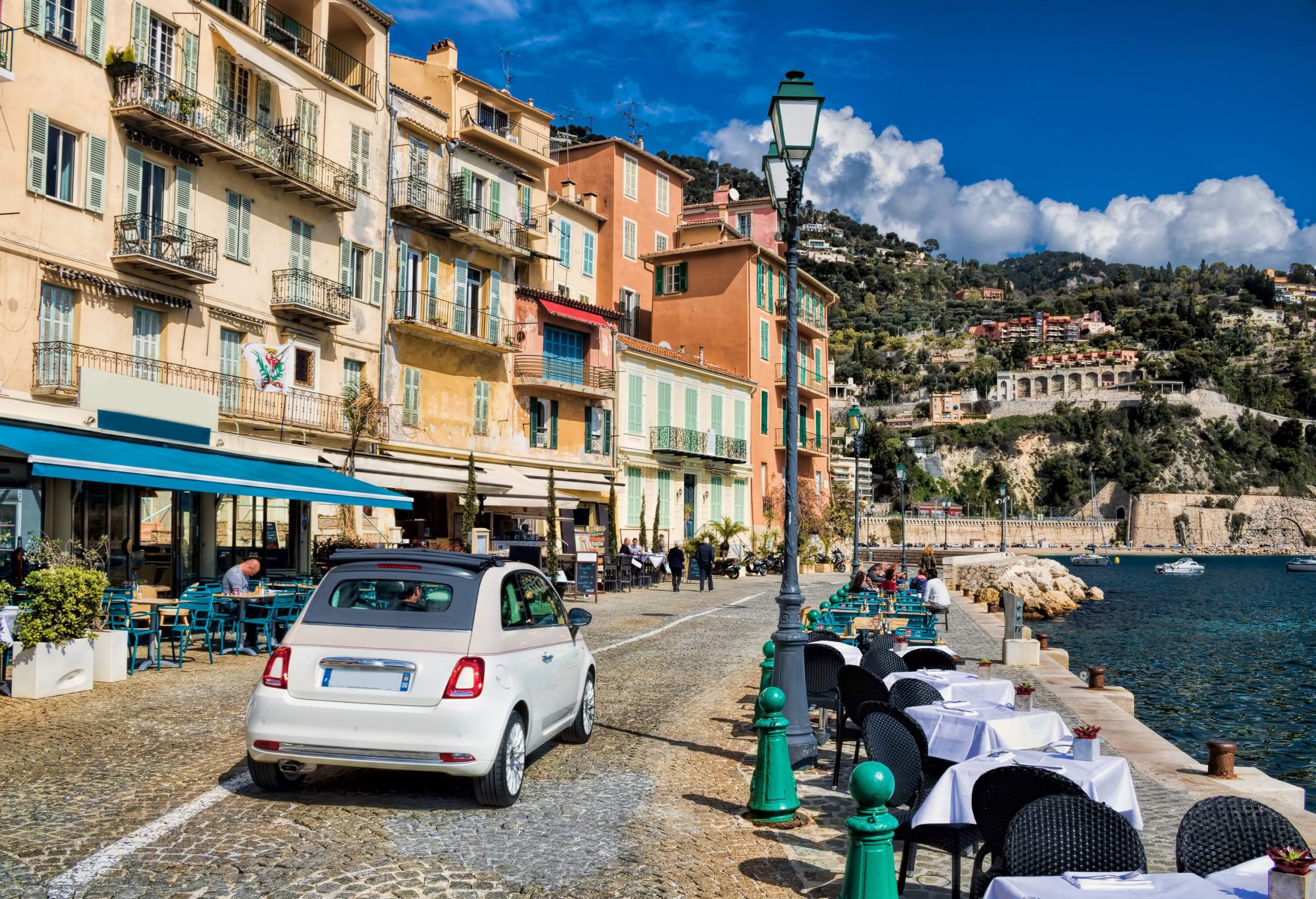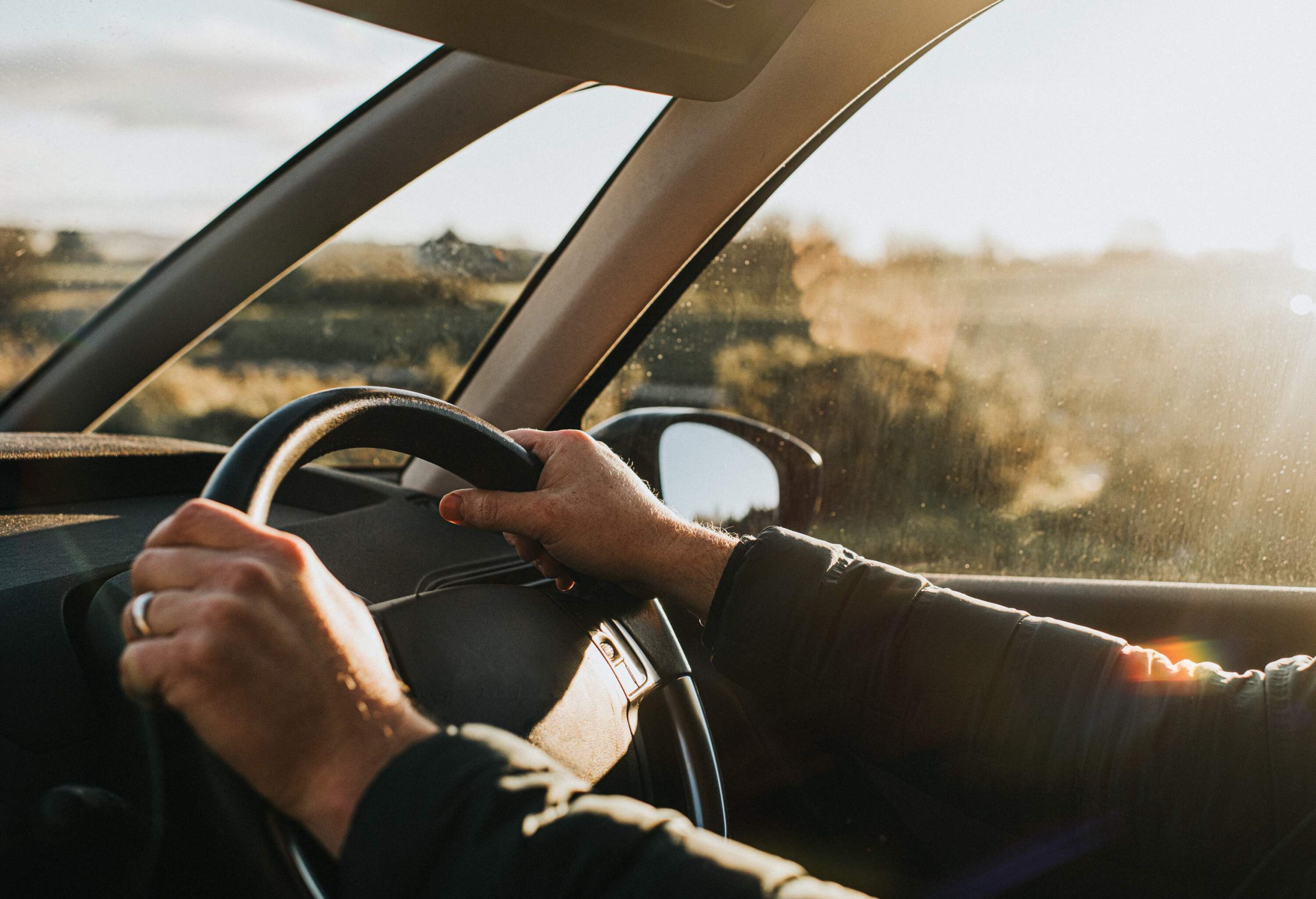If you’re heading to France for your next vacation, don’t leave anything up to chance. This article will tell you what the requirements are for renting a car and driving in France.
Cheap car rental in France
Requirements for driving in France
Before you head off on your vacation or business trip in France, make sure you have examined all the rules and requirements – there are quite a few!
Documents to carry with you when driving in France
Below is a summary of everything you will need to take with you, keeping in mind that the minimum age for driving in France is 18+ :
- Valid driver’s license (and its translation in French, or an International Driving Permit)
- Valid passport or National ID Card (for EU citizens)
- Car equipment
- In addition to the above documents, your rental car should be equipped with the following items:
- Warning triangle
- High-visibility jacket
Other seasonal requirements include:
- Snow chains (if you are driving within a “Snow Zone” between 1st of November and 31st of March)
Renting a car in France
Here’s what you need to know if you’re planning to rent a vehicle in France.
What do you need to rent a car in France?
In order to rent a car in France you must be at least 18 years of age. However, some car rental companies might have a higher age minimum. Below is a list of all the normally required documents:
- Valid driver’s license (which you have had for at least a year)
- Translation of your driving license in French, or an International Driving Permit (IDP)
- Valid Passport for identification
- Credit card (some agencies accept debit cards, but not all)
- Third-party liability insurance (this is usually included in the car rental contract)
Tips for renting a car in France
There are a few things to remember or watch out for when renting a car in France. Car rental policies usually include unlimited third-party insurance by default as this is a requirement when driving in France. For additional insurance coverage, it is best to do some research and shop around. Buying insurance from the rental car company is likely to be costlier.
If you’re planning on driving in more than one country, make sure you inform the rental car company in advance, and ensure that your insurance covers all of the countries you plan on visiting.
When you pick up your rental car, you should inspect it in detail and take note of any marks or scratches, and take photos upon returning it as proof of the condition you returned it in. Remember also that if you pick up the car with a full tank, you need to return it with a full tank to avoid refueling charges.


Rules of the road in France
Highways and toll roads
French highways are privately owned by a number of companies and usually require you to pay a toll. This can be paid in cash or by card, however please note that only Mastercard and Visa are accepted.
You will find three types of service areas on highways: parking areas, rest areas with playgrounds and toilets, and full-service areas with shops and petrol stations. In the case of an emergency, you are not allowed to call your own tow company. Instead, use one of the orange emergency telephones to call for help. These are situated every 2km along the highways.
Roundabouts
In France, there are two styles of roundabout with slightly different rules.
With old-style roundabouts, any vehicles that are already on the roundabout must give way to vehicles entering the roundabout on their right. These roundabouts are less common these days, with the most famous probably being the one around the Arc de Triomphe in Paris.
In general, you can recognize them by a sign in the shape of a triangle with a red border and a black X in the middle. As for new-style roundabouts, the priority goes to all vehicles that are already on the roundabout. Of course, emergency vehicles that have a flashing siren always have priority, no matter which direction they are coming from.
Blood-alcohol limit & drunk driving
The rule in France is ‘Celui qui conduit, c’est celui qui ne boit pas,’ meaning ‘The one who drives is the one who is not drinking.’ It’s a very important rule, one that is closely monitored by the police on the roads.
The maximum blood-alcohol level is 0.05%. This is a lower limit than in most of the United States, so make sure you are careful with your consumption of alcohol while visiting France.
Child seat regulations
Children up to the age of 10 years must travel in a child seat or restraint. Infants below 30lbs (13kg) in weight need to be in a rear-facing child seat, kids weighing below 40lbs (18kg) should be placed in a child seat equipped with a protection tray or a five-point harness, while children below 80lbs (36kg) must be in a booster seat or booster cushion with an adult seatbelt to protect them.
Low emission zones
Some cities, such as Paris, Toulouse and Lyon, are classified as Low Emission Zones. The rules for these zones are as follows: any cars registered before 2011, whether petrol or diesel, are banned from driving inside the zone on weekdays between 8am and 8pm. Lorries and buses manufactured before 1997 are also banned from driving inside these zones. Driving in these areas with an unauthorized vehicle can lead to a fine of €68 (around $75 USD) (find more information here).
Parking
If you’re looking for a space to park on a road with traffic running in both directions, you are only allowed to park on the right-hand side. On the other hand, if the street you are on is a one-way street, you can park on either side of the road, providing there is enough space. Keep an eye out for the yellow lines on the curb that indicate spots where parking is prohibited, and make sure you read the signs to see if you need to pay for parking – you will usually see a big “P” on the parking meter, or “horodateur,” if you are required to pay. Otherwise, there will be signs depicting a parking meter, usually in the bottom right hand corner. Disabled drivers have dedicated spots and do not have to pay for parking.
Fuel
It is important to know the names of the different types of fuel in French to avoid mistakes. SP95/E10 is unleaded fuel with 90% gasoline and 10% ethanol, while E85 is unleaded fuel with 70% to 85% ethanol and the rest gasoline. Important: if you see the word “Gasole” please keep in mind that this is the word for diesel – not gasoline! GPL is also available, and in some locations so are electric stations.
You can usually pay by cash or by card, but please keep in mind that some cards issued abroad are not always accepted by automated machines, so make sure you have enough cash on you, especially when driving on Sundays.
Driving in France – FAQs
In order to drive in France, you must be at least 18 years of age, or 21 if renting a car, and you must have your driver’s license, its translation in French (or IDP) and passport with you at all times.
In order to rent a car in France, you must be 18 years old or over. Please be sure to check well in advance with your rental car provider, as different providers have different requirements.
In order to rent a car in France, you must be 18 years old or over. Please be sure to check well in advance with your rental car provider, as different providers have different requirements.
Yes, and additionally to your US driver’s license, you must have its translation in French (or an International Driving Permit).
Since the 22nd of May 2020, it is no longer mandatory to carry a breathalyser in your car when driving in France.




